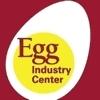Natural oregano essential oil-based feed additive as an alternative to anthelmintics
An Evaluation of a Natural Oregano Essential Oil-Based Feed Additive on the Worm Burden and Productivity of Bovans Brown Laying Hens in a Free-Range Production System
Alternatives to anthelmintics for mitigating helminth infection and maintaining hen performance are much needed in free-range egg production systems. The objective of this study was to evaluate the effect of feeding a natural oregano essential oil-based feed additive (OS) to Bovans Brown laying hens in a free-range system, on intestinal helminth load, egg production and egg quality characteristics.
Pullets were fed either a Control (corn/SBM diet) or supplemented diet (Control + OS (300g/tonne)) through to 16 weeks of age. The laying phase, from 17-41 weeks of age, had three dietary treatment groups as follows: (1) Control in rearing phase (C) + Control in laying phase (C), CC; (2): Control in rearing phase (C) + OS in laying phase (O), CO; and (3) OS in rearing phase (O) + OS in laying phase (O), OO. Five hundred and forty hens were reared in a conventional slatted system until 12 weeks of age, then allowed to range with a mix of summer and winter forages providing three replicates per treatment in the production phase. Biweekly performance data was captured. Tapeworm, large roundworm, and caecal roundworm burden were measured at 16 weeks and termination of the trial at 41 weeks.
At the end of rearing, caecal roundworms were observed in lower numbers in pullets on O diet rather than C. At 41 weeks, a lower count of caecal roundworms and large roundworms were observed in hens in OO group compared to hens in CO and CC groups. Fewer hens in OO and CO groups were infected with tapeworms compared to CC hens. Feed conversion (kg feed consumption/dozen eggs) was six points lower for OO and CO than CC, and a larger proportion of USDA Grade A eggs were produced for OO than CO and CC.
The use of natural oregano oil in free range poultry systems offers a potential tool for mitigating helminth infections and maintaining hen performance.
I. INTRODUCTION
II. METHOD
III. RESULTS




IV. DISCUSSION
Dhama K, Latheef SK, Mani S, Samad HA, Karthik K, Tiwari R, Khan RU, Alagawany M, Farag MR, Alam GM, Laudadio V & Tufarelli V (2015) International Journal of Pharmacology 11: 152-176.
Force M, Sparks WS & Ronzio RA (2000) Phytotherapy Research 14: 213-214.
Gheisar MM & Kim IH (2018) Italian Journal of Animal Science 17: 92-99.
Giannenas IB, Florou-Paneri P, Papazahariadou M, Christaki E, Botsoglou NA and Spais AB (2003) Archives of Animal Nutrition 57: 99-106.
Lund E, Wakeman W & Anderson KE (2020) International Poultry Scientific Forum, Atlanta, USA.
Mohiti-Asli M & Ghanaatparast-Rashi M (2018) Journal of Applied Animal Research 46: 184- 189.
Permin A, Bisgaard M, Frandsen F, Pearman M, Kold J & Nansen P (1999) British Poultry Science 40: 439-443.
Rajkovic M, Vucicevic I, Vucicevic M, Dosenovic M, Charvert LC, Resanovic R & Trailovic MS (2019) Acta Veterinaria-Beograd 69: 414-425.
Soliman MM, Mousa SMM & Bahakaim ASA (2016) Egyptian Poultry Science Journal 35: 67-83.



















